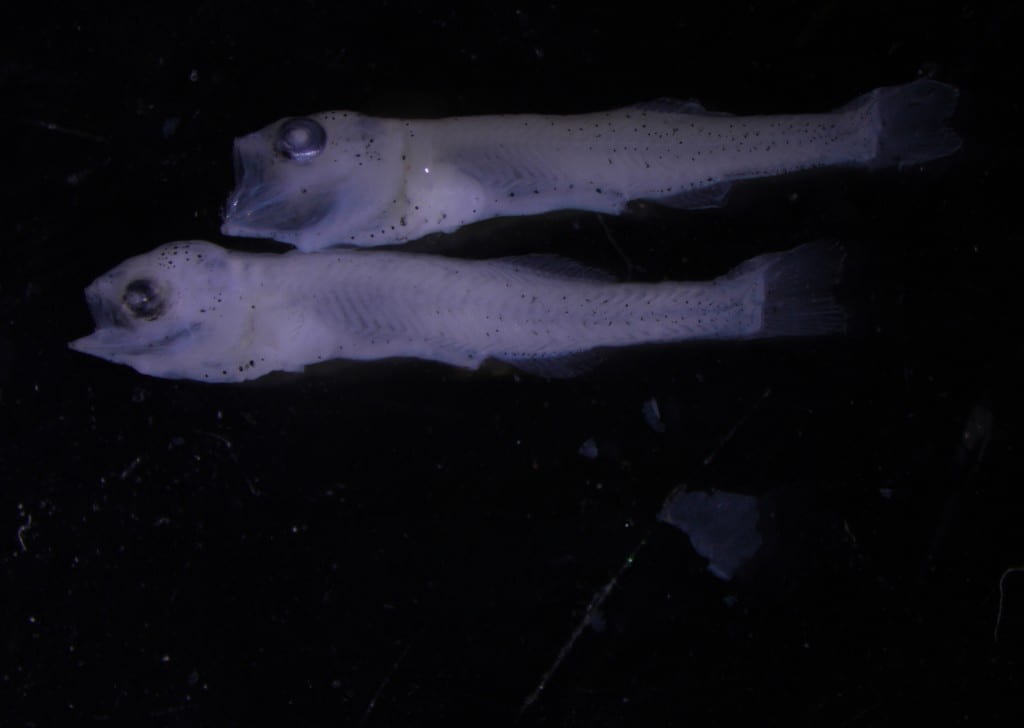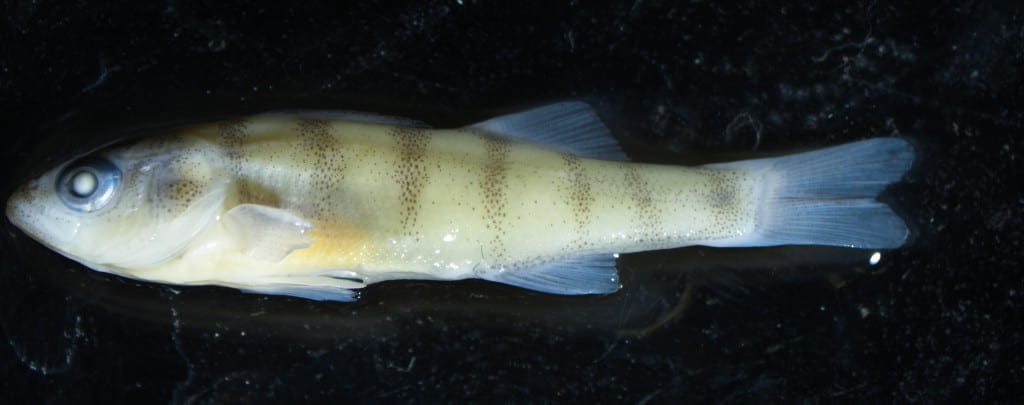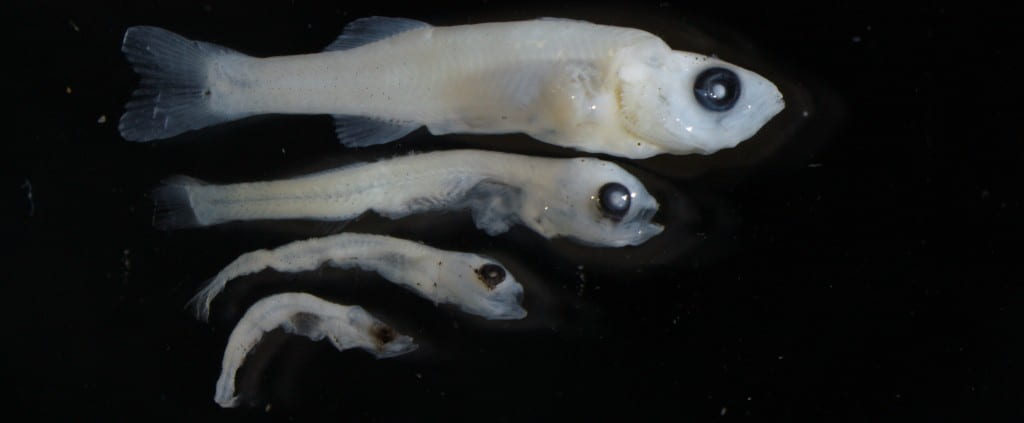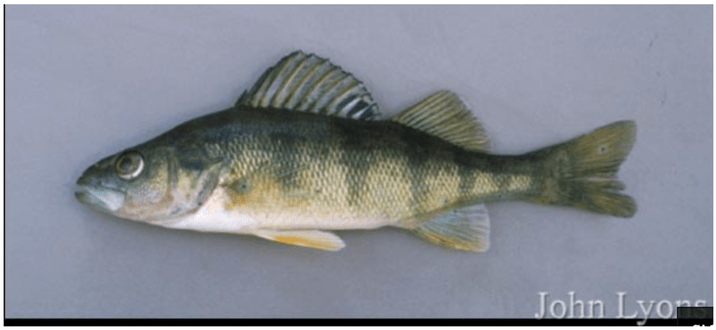Key Characteristics:
- Equal number pre and post anal myomeres.
- More overall myomeres than Centrarchidae
- Pointy, forward facing mouth
- Double dorsal fin, but first part may not come in until older.
- Have scattered pigment or very little.
- Yellow perch are by far the most abundant. Darters are generally not found in Lake Michigan but may be in tributaries.

Multiple Larval Yellow Perches. 14 mm. United States Fish Wildlife Service. Green Bay, WI. Brianna McDowell. 2017.

Larval Yellow Perch. 19 mm. United States Fish Wildlife Service. Green Bay Harbor, WI. Adam Dziewa. 2018.

Juvenile Yellow Perch. 30 mm. United States Fish Wildlife Service. Green Bay Harbor, WI. Adam Dziewa. 2018.

Different Larval Stages of Yellow Perch. United States Fish Wildlife Service. Marian Shaffer. 2017
- Body not elongated, eel-shaped, round in transverse section, uniformly pigmented (1B)
- Chin barbels absent (3B)
- Snout short, its length usually less than 10% TL; median fins otherwise (5B)
- Median fins or finfolds showing distinct separation (7B)
- No adipose fin, or demarcation of one, in finfold (10B)
- Preanal myomeres greater than or equal to postanal myomeres (14A)
- Preanal myomeres approximately equal to postanal myomeres (difference five myomeres or less) (15A)
- Total myomeres greater than or equal to 35 (20A)
- Percidae – Perches
Adult History
- Physical Description
- Long dorsal fin with two distinct lobes, terminal mouth, 6-9 vertical dark bars, absent adipose fin, body’s background is yellow/green with a mixture of orange, 52-61 ctenoid lateral scales, and compressed body shaped
- Spawning Habitat
- Along shorelines and shallow bays
- Between 0.5 – 1.5, 1.5-3, and 8-10 meters deep
- Rocky trenches within clay shoals
- Spawning Substrate
- Eggs deposited over gravel, aquatic vegetation, sand, and debris covered bottoms
- Spawning Behavior
- Migrate shoreward at 35-45°F
- Female drapes eggs over submerged vegetation
- Up to 10-15 males fertilized the eggs
- Spawn at nights or early mornings
- Females can spawn up to 8 times in a lifetime
- No nest built or parental care
- Time of Year
- May – June in Lake Michigan
- Spawning typically takes place at water temperatures of 40 -65°F
- Diet
- Small fish, insects, snails, leeches, and crayfish

